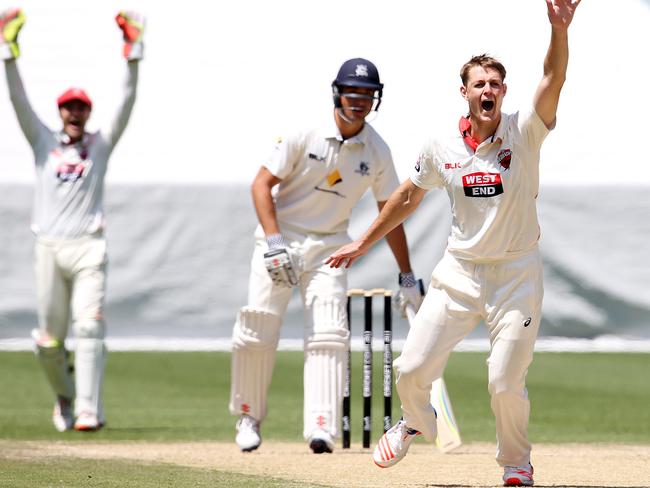Ian Chappell column: Why cricket officials need to go into bat for bowlers to ensure their safety
THE death of batsman Phillip Hughes led to a review into safety in cricket. Hopefully, it won’t take a similar tragedy to see a discussion into the wellbeing of bowlers.

Cricket
Don't miss out on the headlines from Cricket. Followed categories will be added to My News.
It took the death of batsman Phillip Hughes to bring about a review into safety in the game of cricket. Hopefully, it won’t take another similar tragedy to trigger a discussion into the wellbeing of bowlers.
The news that Test paceman Joe Mennie suffered bleeding on the brain after being hit in the head at practice, will hopefully mean the addition of bowler safety to the list of discussion points in the ongoing negotiations between Australian players and administrators.
Currently, the players association [ACA] and Cricket Australia [CA] are at odds over the always contentious issue of finance as they renegotiate the Memorandum of Understanding. While it’s crucial to get the money balance right — how much is required to run the game; what percentage should the players get; the amount to be spent on the development of young players — there are other serious issues that also need to be included in any formal discussions.

Heading the list of “other points for discussion” should be the issue of bats. Mennie’s “scary” practice accident is yet another reminder that the speed the ball leaves the modern weapon is now so great that a bowler doesn’t have time to protect himself from a well hit shot coming straight for the ‘noggin’.
Because technology is now sufficiently advanced that this speed can be measured, surely it’s time to refine the bats. Changes need to be made so the speed at which the ball leaves the bat, will mean the bowlers DO have time to protect themselves. The debate among players should be objective rather than based on serial whingeing from batsmen who believe any reduction in the efficiency of their precious weapons will adversely affect their performance.
Memo to batsmen; the bowlers also pay ACA membership fees.
While on the CA safety review, it was disappointing that it didn’t include batting technique to short-pitched deliveries. If the bouncer is played efficiently it reduces the chances of batsmen being hit, as indicated by the increasing number of players suffering blows since the introduction of helmets and body armour.
This raises another question for the ACA. Do they recommend young batsmen develop a technique that’s likely to prosper in Test cricket and thereby risk missing out on the lucrative T20 circuit? Or do they adopt a short-form based method that if it fails to bring success in all forms of the game, will at least guarantee a decent T20 living?
The technique dilemma doesn’t just apply to batsmen, as English fast bowler Tymal Mills highlighted. He’s been reduced to solely 20 over cricket by a serious back complaint; “Everything I do is geared towards being the best T20 player I can be,” said Mills recently, “whereas it’s tough for the other guys preparing for Test cricket and that’s completely different.”

Then there’s the vexing problem of an illogical international schedule. This will reach farcical proportions when an Australian T20 team plays against Sri Lanka at home, at the same time the Test side is preparing for a four match series in India.
This ludicrous situation can be flippantly explained as normal procedure for a modern cricketer but the ACA should try to ensure the vocation is a bit more equitable. And they could legitimately argue that irrational scheduling impacts on lopsided home and away Test results.
This is at the very heart of Test cricket’s survival. With all the other challenges Test cricket faces, it can’t continue to showcase contests that almost always favour the home side.
The escalating success of T20 leagues like the IPL and BBL means that cricket needs to seriously discuss a viable blueprint for it’s future. By agitating for a resolution the players could speed up a process that has languished as the administrators dither.
A broad-minded approach by the ACA could bring much-needed robust debate to the many issues beyond finance that cricket needs to resolve.


